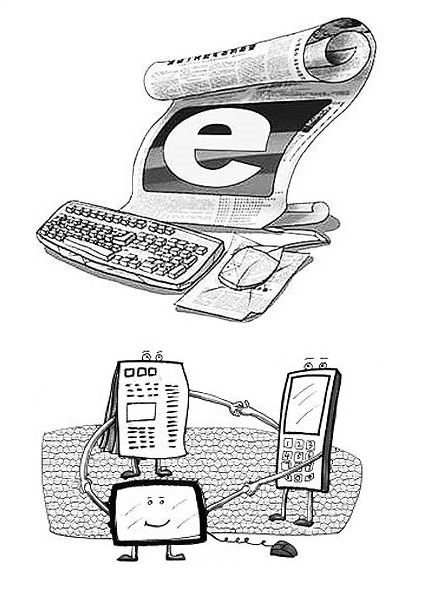Future of media integration depends on Internet

Media integration not only provides more channels for traditional media to report news, but also makes breakthroughs in its management mechanism, news production and profit model.
A set of guidelines for promoting the integration and development of traditional and new media was recently adopted at the fourth meeting of the Central Leading Group for Comprehensively Deepening Reforms. To promote media integration, the guidelines call for adherence to news reportage regulations and development of new media. A technology-driven media transformation is currently underway.
Integrating media with innovative thinking
In an age of rapid technological development, the Internet has advanced mobilization, socialization, individuation and fragmentation. Some new technologies, including metadata and cloud computing, have made access to mass, individualized information a reality, posing major challenges to the traditional media.
Nowadays, promoting the integration of traditional and new media has become a significant measure for China to further enhance its quality of news reportage.
Media integration has been taking place over more than a decade in China. Some scholars claim the new guidelines provide an important opportunity for China to realize media transformation in the Internet age.
“Media integration is ushering in revolutionary changes to media value, content and influence, rather than merely serving as a continuation of traditional media,” said Yu Guoming, professor at the School of Journalism and Communication at Renmin University of China.
Yu said popularization of the Internet and new media techniques have led to tremendous changes in the media’s function. In order to maintain its influence, the traditional media needs to integrate with new media online. He also claimed that three key aspects determine the quality and effect of news reportage, namely the content supplier, technical support and users’ insight. It is therefore necessary to remove limits on ownership and boundaries between industries to realize integration, he noted.
Tang Runhua, research fellow at the Research Institute of Journalism under the Xinhua News Agency, claimed that the Internet emphasizes cooperation and innovation. The media should report news based on these ideas and transition from a quantitative to qualitative model, said Tang.
Integration over obscurity
Integration means effectively combining all kinds of media resources and production factors to realize the sharing of information and forming of an integrated organization structure and communication system. However, integration has not yet been fully realized in accordance with previous practices.
In acknowledging existing problems in the media, professor Li Liangrong from the School of Journalism at Fudan University said that many media outlets focus on text, video, audio and photo news rather than increasing core information content. Meanwhile, Li noted many news websites are losing money due to their lack of a profitable model.
“Media integration requires exploring the role of digital technology within the whole process of news production, not just copying content from traditional media,” said Li.
A new media outlet dubbed The Paper launched by the Shanghai United Media Group represents a successful example of media integration by giving full play to the advantages of traditional and new media. With several exclusive and in-depth reports on corruption, it has already proven its strength in news reportage.
However, whether or not it can adopt a profitable model without relying on the financial support of a parent company looms as a severe challenge in its future development.
Exploration in infancy
Zhang Zhi’an, dean of the School of Communication and Design at Sun Yat-sen University, said that media integration should focus on the Internet in rebuilding the process of news reportage. During this process, all media face problems of looking for a new profitable model and innovating the way news is reported.
Internet-led new media projects require team cooperation, technical innovation and high investment. They are difficult to be implemented within the traditional media group due to a lack of comparatively sound multiple property rights system and incentive mechanism.
Compared to the Western media, Chinese media has more long-term advantages in integration because of government support, said Zhang. On one hand, major media outlets including Party newspapers should insist on a nonprofit model under government support to offer high-quality news reportage. On the other hand, commercial media outlets should realize transformation in accordance with Internet regulations, said Zhang.
